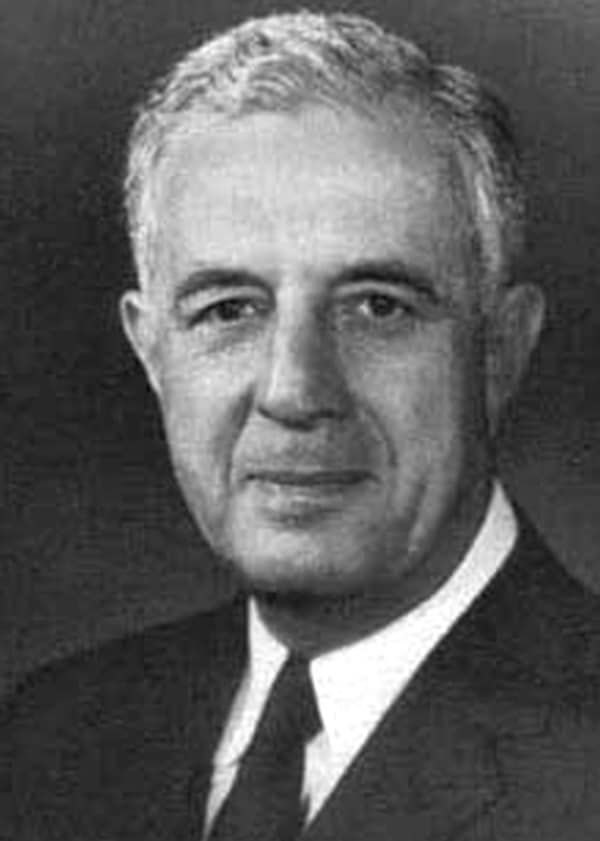Michael Leventhal

Michael Leo Leventhal (1901-1971) was an American gyecologist
Lifelong professional affiliation with the Michael Reese Hospital, attaining the position of attending obstetrician and gynecologist
Leventhal is remembered for his contribution to the field of infertility and eponymously for the Stein–Leventhal Syndrome (1934)
Biography
- Born on November 16, 1901 in Chicago
- 1922 – graduated BS, University of Chicago
- 1924 – MD, Rush Medical College, Chicago
- 1925 – Beginning with his internship, he maintained a continuing affiliation with the Michael Reese Hospital, attaining the position of attending obstetrician and gynecologist
- 1926 – joined Irving Stein (1887-1976)l at Michael Reese Hospital began to conduct research together on causes of sterility in women
- 1940-1944 served with the U.S. Army in evacuation hospitals in Africa, Sicily, and Italy
- Died on July 8, 1971
Medical Eponyms
Stein–Leventhal Syndrome (1934) [polycystic ovarian syndrome (PCOS)]
Complex endocrine and metabolic disorder characterised by anovulation, amenorrhoea / oligomenorrhoea, infertility, obesity, hirsutism, insulin resistance, and polycystic ovaries.
1930s – Stein and Leventhal established that women showing symptoms of infertility, excess body hair, and irregular menstruation also had irregular ovaries.
1934 – Stein and Leventhal presented their experience with seven patients amenorrhea, hirsutism, obesity, and enlarged polycystic ovaries investigated by ovarian wedge resection, to a meeting of the Central Association of Obstetrics and Gynecologists in New Orleans [Published 1935]
- A series of seven cases is herewith reported in which amenorrhea was associated with the presence of bilateral polycystic ovaries.
- Bilateral polycystic ovaries are most likely the result of hormonal influences and not the result of inflammatory change.
- The diagnosis of ovarian pathology is greatly facilitated by the use of pneumoroentgenography.
- The treatment of the amenorrhea with estrogenic hormone in the patients referred to proved unsatisfactory.
- Surgical treatment, consisting of wedge-resection of the cystic cortex of the ovaries, was successful in completely restoring physiologic function. Menstruation in every instance became normal and remained so during the period of observation. Pregnancy followed in two patients.
1950s – Stein continued to follow up his patients. Researchers began using the term Stein-Leventhal syndrome to define the range of the symptoms described. They broadened the syndrome of persistent
anovulation to include clinical manifestations including insulin resistance and hyperinsulinemia, and hyperandrogenism.
…While bilaterally enlarged ovaries associated with menometrorrhagia had been described, such a finding in relation to amenorrhea was unusual enough to warrant biopsy of the ovaries for etiologic purposes. To obtain sufficient material, the biopsy was done by excising a wedge-shaped portion of each ovary. Following the wedge resection, the women menstruated regularly and some of them readily conceived. Hence it became evident that ovulatory cycles ensued after this simple surgical procedure.
Within the next decade, a history of secondary amenorrhea and/or sterility, and the findings of uterine hypoplasia, breast hypoplasia, and hirsutism became associated with bilaterally and symmetrically enlarged ovaries and was recognized in the medical literature as the Stein-Leventhal syndrome.
The surgery originally intended for biopsy alone yielded no specific data concerning etiology; instead, it eventuated in the identification of a syndrome and, at the same time, became a successful method of treatment.
1965 – After 30 years of follow up, Stein concluded that the return of fertility was permanent in women with Stein-Leventhal syndrome who received a wedge resection.
Major Publications
- Stein IF, Leventhal ML. Amenorrhea associated with bilateral polycystic ovaries. American Journal of Obstetrics and Gynecology 1935; 29: 181-191. [Stein–Leventhal Syndrome]
- Leventhal ML, Cohen MR. Bilateral polycystic ovaries, The Stein syndrome. American Journal of Obstetrics and Gynecology. 1951; 61(5): 1034-1046
- Leventhal ML. The Stein-Leventhal syndrome. American Journal of Obstetrics and Gynecology. 1958; 76(4): 825– 838.
- Leventhal ML. Functional and morphologic studies of the ovaries and suprarenal glwnds in the Stein-Leventhal syndrome. Am J Obstet Gynecol. 1962 Jul 15;84:154-64.
- Leventhal ML, Scommegna A. Multiglandular aspects of The Stein-Leventhal syndrome. Am J
Obstet Gynecol. 1963;87:445– 454.
References
Biography
- Powell JL. Powellʼs Pearls: Irving Freiler Stein, MD (1887–1976) and Michael Leo Leventhal, MD (1901–1971). Journal of Pelvic Medicine and Surgery, 2008; 14(5): 413–414.
- Azziz R, Adashi EY. Stein and Leventhal: 80 years on. Am J Obstet Gynecol. 2016 Feb;214(2):247.e1-247.e11.
Eponymous terms
- Dastur Adi E, Tank PD. Irving Stein, Michael Leventhal and a slice of endocrine history. J Obstet Gynaecol India. 2010 Apr;60(2):121–2.
Eponym
the person behind the name
BA MA (Oxon) MBChB (Edin) FACEM FFSEM. Emergency physician, Sir Charles Gairdner Hospital. Passion for rugby; medical history; medical education; and asynchronous learning #FOAMed evangelist. Co-founder and CTO of Life in the Fast lane | On Call: Principles and Protocol 4e| Eponyms | Books |
